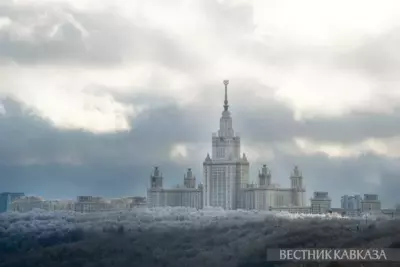Almost a detective story with a contract on the supply of Iranian blue fuel continues to unfold in Tbilisi. This was reported by several major media, citing official Iranian sources. Yesterday several Iranian news agencies spread the unexpected information that an agreement has already been reached, and soon Iranian gas will be supplied to Georgia, moreover, through the territory of Armenia. It was a sensation, since no information on direct talks with Iran on the supply of natural gas was spread by the Georgian authorities. The Minister of Energy, the former defender of Milan.FC, Kakha Kaladze, only hinted that he was ready to go to Tehran to discuss the possibility of additional volumes of natural gas supplies, which is either currently not enough for the country, or will not be enough in the near future, when the economy of Georgia will begin to develop rapidly.
But the visit of Kaladze to Tehran did not take place. One of the reasons was the sudden resignation of the Prime Minister, Irakli Garibashvili, who shortly before leaving had to personally explain the causes of the numerous statements by Mr. Kaladze about the lack of natural gas supplied from Azerbaijan, and plans for the purchase of natural gas from Russia or Iran to the President of Azerbaijan, Ilham Aliyev, during an urgent visit to Baku.
It seemed that the topic completely lost relevance after repeated statements by Azerbaijani and Turkish officials about the acceleration of implementation of the project 'Shahdeniz-2'. And suddenly, the executive director of the Iranian company NIGC, Ali Reza Cameli, states that the negotiations with Georgia on the supply of gas through Armenia are successfully completed: "According to the agreements, we have to supply gas to the border of Armenia, and Georgia will receive it on the Georgian-Armenian border." He stressed that deliveries will be directed at meeting the country's domestic needs, not for its further transportation to the EU countries. This clarification was completely meaningless actually, since Georgia has no facilities or infrastructure for the delivery of Iranian gas to Europe in any form – natural or liquid. While such projects exist, they belong to the distant future.
Nevertheless, with reference to Cameli, media named the volume of natural gas as 8-15 million cubic meters. Right after that, the Ministry of Energy of Georgia finally issued a detailed statement, which left mixed feelings. On the one hand, the agency denied reports that an agreement has already been reached: "At this stage there is no specific agreement on natural gas supplies with the Iranian side, and, accordingly, the issue of beginning of deliveries has not been resolved either." On the other hand, the Ministry of Energy immediately pointedly noted that Iran "is one of the world's largest gas-producing countries, and the negotiations with all potential suppliers in the region will continue in order to ensure stability and continuity in Georgia's gas supplies in the long term."
Thus, the situation became even more confusing, and observers began to emanate from the impossible in their thoughts. For example, an expert on economic and energy issues, Giorgi Khukhashvili, drew attention to the key factor – Armenia has no way to transport Iranian gas to Georgia through its territory. "I do not understand through which technical means it is possible to implement it. The diameter of the pipe through which gas is supplied from Iran to Armenia is 700 millimeters, and its throughput capacity is exactly what required for one thermal power plant. Accordingly, the Energy Minister should explain how Georgia plans to receive the Iranian gas. If this is a long-term project, in the future, of course, you can do everything, but today it is just not serious to talk about this," Khukhashvili stated.
Theoretically, there is another route of delivery of natural gas from Iran to Georgia – through Azerbaijan – but all existing pipelines are already occupied. Through them, Azerbaijani gas, contracted for many years ahead, flows to Turkey and Europe, and Georgia receives its share as payment for transit. In addition, Azerbaijan directly supplies gas to Georgia at a discounted price. Theoretically, it is possible to imagine the construction of new pipelines, but it is associated with a variety of financial and political problems.
There is a historical precedent for addressing this issue. During the winter of 2006, in the North Caucasus, the strategic Russia-Georgia-Armenia gas pipeline exploded. Until now, there is no consensus about whether what happened was sabotage or a technical disaster. Georgia was left without fuel in very cold weather. Later, President Saakashvili repeatedly thanked his Azerbaijani counterpart for the aid: "The Azerbaijani leadership has reduced the supply of natural gas to its own regions, in order not to leave Georgia without gas." Azerbaijani gas was primarily supplied to the Gardabani thermal power plant, the work of which is critically important for the electric power supply of the entire country.
Simultaneously, then-Minister of Energy, Nika Gilauri departed to Tehran to reach agreement with the Iranian leadership on imports of natural gas through an "indirect scheme": Iranian gas was supplied for a short time (until the restoration of the damaged section of 'Northern Pipeline') to the southern regions of Azerbaijan, and the Azerbaijani gas intended for these regions went to Georgia.
In this way the country was able to obtain an additional amount of fuel (about 4.955 million cubic meters) in spite of the lack of infrastructure linking the gas transport systems of Georgia and Iran.
But whether such a scheme is possible in the current conditions is the big question, because unlike the situation ten years ago, Georgia has not yet reached agreement with its strategic partner in the energy sector – Azerbaijan.
Baku has repeatedly made it clear that the strategy of the current Georgian authorities on "diversification of sources of energy carriers" needs a more precise and detailed explanation. First of all, in terms of motives, since the most important objective premise for its implementation does not exist – a real shortage of natural gas.






